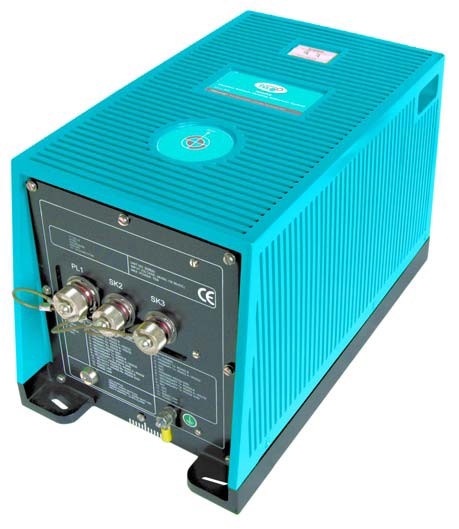Network - TSS1-TSS2 Format (Heading) - 05
Description
Driver to decode heading, roll, pitch and heave from any TSS motion sensor, e.g. TSS320, DMS or MAHRS T outputting the TSS1/HEHDT/TSS2 (TSS HHRP2) messages over the network. The driver will auto sense the different formats.
The message(s) can be re-directed via a Benthos C3D Seafloor Mapping system over a network UDP port, where this system can add two extra comma-separated fields to the message, containing the UTC timestamp.
The driver will automatically detect whether the message format is the original TSS1/TSS2/HEHDT format or whether it contains the additional UTC time tag that was added by the C3D.

Driver Information
| Driver | Network - TSS1/TSS2 Format (Heading) | Interface Type | UDP | Driver Class Type | Terminated |
|---|---|---|---|---|---|
| UTC Driver | Yes | Input / Output | Input | Executable | DrvQPSTerminatedUDP.exe |
| Related Systems |
| ||||
| Related Pages | |||||
Decoding Notes
As already mentioned above the format is auto sensing, the driver will automatically distinguish between TSS1, TSS2 and HEHDT messages. The TSS1 and TSS2 are identical in length but can be distinguished because the TSS2 message contains a space at position 7 whereas TSS1 will contain a non-space at this point.
The decoded observations will be time-stamped with the Timetag information from the message, when these extra fields are indeed part of the message, and when your template setup contains a working PPS system.
If no extra timetag fields are detected, ór when your setup does not have a working PPS time synchronization system, then the observations will be time-stamped when the message is received and decoded.
The quality indicator for the decoded Heading observation will be 1 when the Heading Status flag equals 'F', and 0 (zero) in all other cases. For the HEHDT message the quality will always be zero.
The quality indicator for the decoded Roll, Pitch and Heave observation will be 1 when the Status flag equals 'F', and 0 (zero) in all other cases.
Notice that the quality indicators can be monitored using an Observations Physics Display.
Database Setup
- In order to decode the heading from the message, add a Gyro and Compass System to your template and select the driver "Network - Benthos C3D TSS/HEHDT Format (Heading) (UTC)".
- The Port number must be the same as the UDP port number on which the message is being broadcast.
- In order to decode the roll, pitch and heave from the message, add a Pitch, Roll and Heave Sensor System to your template and select the driver "Network - Benthos C3D TSS1/TSS2 Format (R-P-H) (UTC)".
- Enter the same Port number.
- On the next wizard page it is important to set the correct conventions:
- Heave sign: Positive upwards, Roll convention: Positive heeling to starboard, Pitch convention: Positive bow up.
